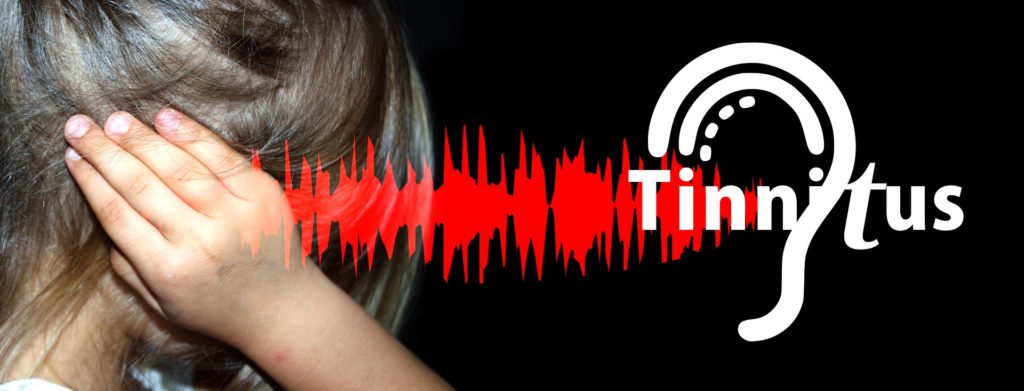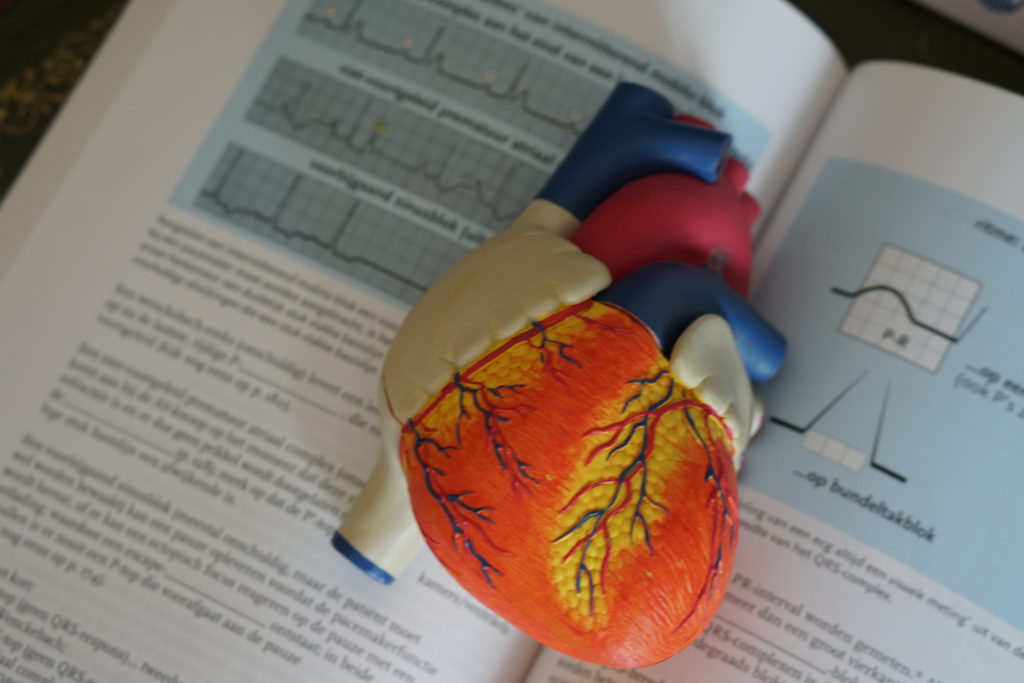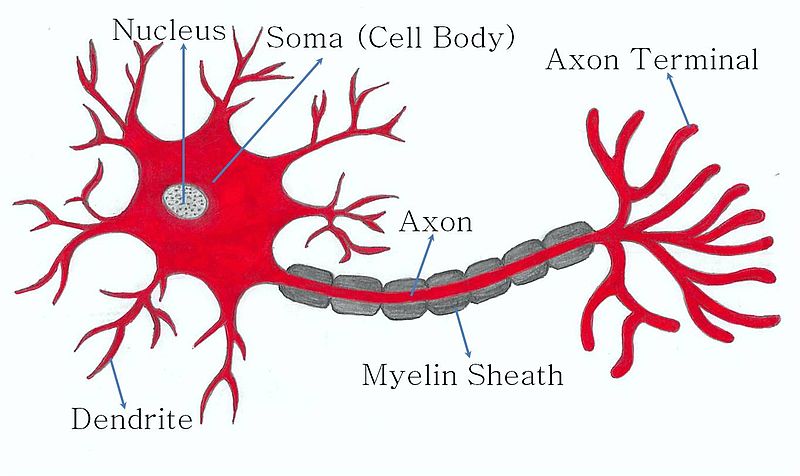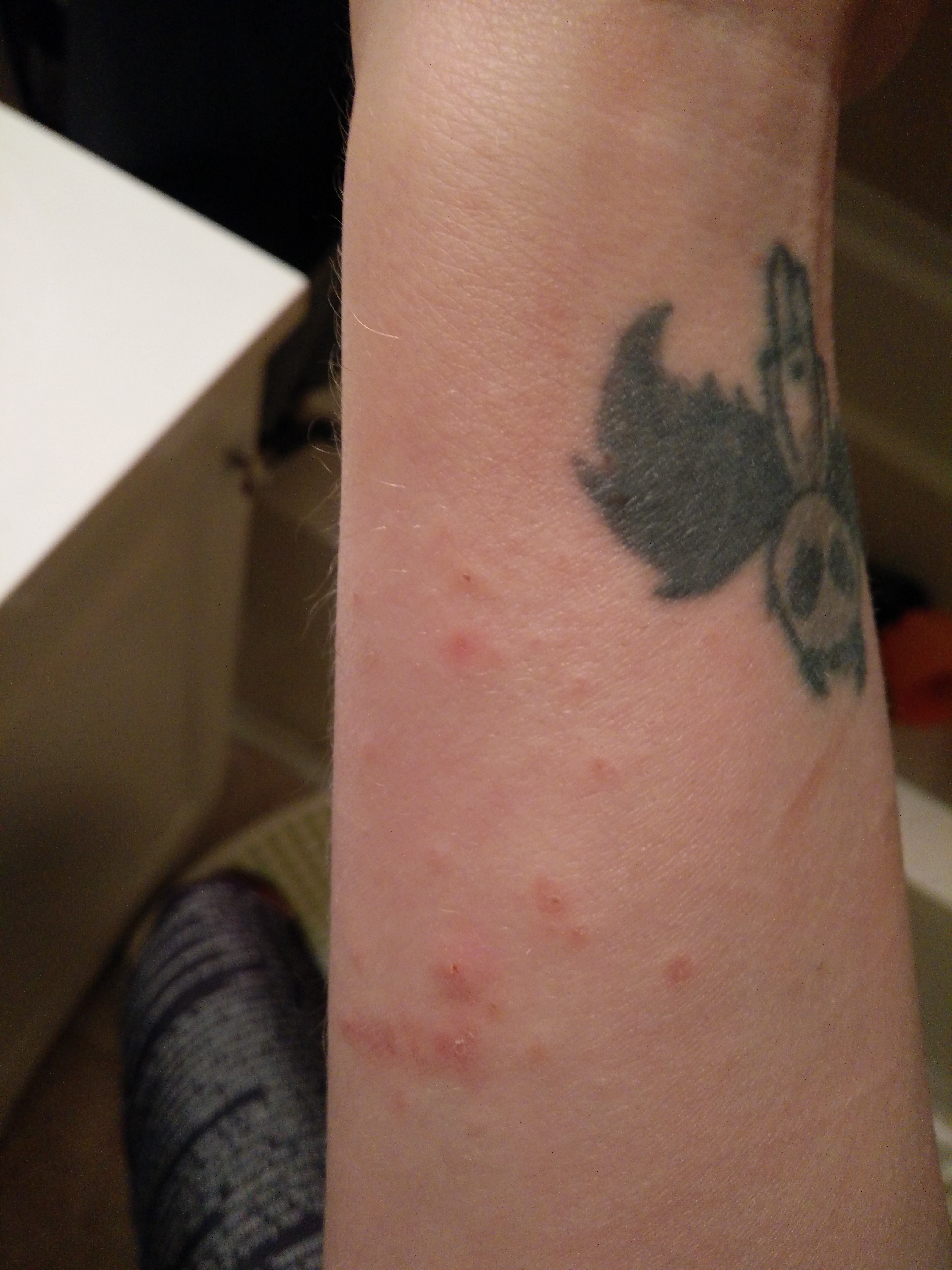7 Signs EMFs Are Making You Sick (Plus a Full List of Symptoms)
Could your smartwatch be making you feel like crap? You’ve been using it for a few years already, so that couldn’t be it, right?
One of the most troubling aspects of EMF exposure is the difficulty to connect the symptoms to the source, and understandably so. Many are vague, nonspecific, and episodic, and the ones that are chronic are easily blamed on other sources. But that doesn’t make them any less harmful.
As a result, we so often blame these “normal” complaints like headaches, insomnia, and anxiety on life, stress, and poor self-care, but if you’re starting to notice a cluster of these first-world symptoms, it may be worth re-evaluating your gadgets.
EMF expert Dr. Magda Havas estimates that 35% of the population struggles with EMF symptoms, with 3-10% of us being “hypersensitive.” Here, we’ll take a closer look at some of the hallmark signs and why they occur.
Disclaimer: No matter what, please know that I am not a doctor and this information is not to be used as diagnostic criteria. If you are experiencing any of these symptoms, you still should consult your physician. The full full disclaimer can be found here.
1. You’ve developed tinnitus for no good reason

Recognized as that unbearable ringing inside your ears that pierces the silence of your bedroom at night, tinnitus is estimated to affect upwards of 50 million Americans, according to the American Tinnitus Association (ATA). While it may signal neurological conditions like Meniere’s Disease, it’s often considered a non-serious irritant caused by a mild degree of middle or inner damage. If, however, tinnitus has crept up on you, or if it sounds like static or “buzzing” and you’re not a frequent attendee of metal concerts, what could be damaging your hearing?
According to this study, among others, your cell phone. Velayutham et al. measured hearing rates between the ear participants used when with their phones, known as the dominant ear, and the one they did not hold their phone against, or non-dominant ear, and found that cell phone usage “revealed high frequency hearing loss in the dominant ear (mobile phone used) compared to the non dominant ear.”
More related, studies have also found that those with electromagnetic hypersensitivity (EHS) are far more likely to suffer from tinnitus: while only 17.5% of the control group in this study reported tinnitus, this figure jumped to half (50.72%) of the participants in the EHS group. That’s a pretty strong connection.
The good news is it isn’t necessarily permanent. Especially in cases of chronic, low-grade EMF-exposure, removing yourself from the source can resolve the maddening noise. In fact, within a few week of moving to a safer home, my tinnitus resolved 100% and has not since returned.
2. You’re suddenly more anxious or just can’t relax

At first, this may look like a classic case of GAD, as you’ll probably start feeling more anxious overall, often for no reason or in any situation. Circumstances that normally wouldn’t phase you might cause sudden bursts of panic, elevated heart rate, shakiness, and other uncomfortable side effects.
In other cases, it might present as a general restlessness, or that feeling you’ve had too much caffeine. It might be harder to settle down, or even fall asleep at night. No matter which form it takes, you know you shouldn’t be feeling this way, especially if you haven’t recently changed anything in your lifestyle to warrant it.
Not only is anxiety an extremely common symptom of EHS, but there are concrete reasons for this, too.
Though there’s a lot going on behind the scenes, let’s begin with an experiment by Gupta et al. that studied the effects of common radio frequencies the behavior on rats. They found that 28 days of 1 hour per day of exposure to 2.45Ghz (a typical WiFi band) “deregulated the hypothalamic pituitary adrenal (HPA) axis in rats as observed by increase in plasma corticosterone levels.” Basically, the HPA axis serves as the command center for our stress hormones, and corticosterone is a hormone produced by the adrenal cortex in response to stress.
The effects also demonstrated interference with glucocorticoid receptors in the amygdala (fight or flight) and cell apoptosis (death) among other processes that all bring something to the pot of unpleasant feelings.
Restless and wired
Speaking of “fight or flight,” alongside these mechanisms, wireless radiation also interferes with the voltage-gated calcium channels (VGCCs) in our neurons. Very simply put, this can lead to neurons over-firing and releasing neurotransmitters and neurohormones, and can be responsible for a variety of neuropsychiatric problems as well as the restlessness and heart-related physical effects of anxiety.
This response can activate your sympathetic nervous system, which is the anxious sensation you feeling during the “fight-or-flight” response. And the more the sympathetic nervous system is turned on, the harder it is to shut off. A prime, though severe example of this can be seen in those with PTSD.
If that’s not enough to convince you, here’s another study discussing the ways EMFs affect your central nervous systems and can even demyelinate axons. Myelin is essential to our neurons communicating, and everything you think or do is a result of neural signaling. So you really don’t want to mess with that.
Don’t expect your health professionals to understand.
No matter how you look at it, there’s a 101 different ways EMFs contribute to anxiety, and if any of them play a role in yours, there’s no doubt you’ll be referred to a mental health specialist. The worst part is that if you’re already predisposed to anxiety, EMFs can even activate or augment it, and what an awful catch-22 that is! And good luck explaining that an American physician.
While it’s never a bad idea to learn how to manage these uncomfortable episodes, and prescription meds may offer some much-needed temporary relief, you could be treating the wrong cause. You can blame it on life stress all you want, but if EMFs are the culprit, it won’t resolve on its own – and can often evolve into something worse.
If you’re suffering right now, though, and need something to get you through, check out my guide to CBD products. This was the only way I survived after tapering off of Buspirone.
3. Your heart’s doing funny (or terrifying) things

While this probably sounds like a side effect of anxiety (and is often misdiagnosed as GAD by misinformed doctors), this is a direct product of EMFs on your heart and nervous system.
The most common symptom you’ll probably notice is the sensation of “skipped beats,” or palpitations, though instances of extreme duress can cause chest pain, arrhythmia, or even terrifying episodes of supraventricular tachycardia (SVT) that can cause a rapid heart rate, which, my own cardiologist confirmed has nothing to do with a panic attack. Dr. Havas makes the distinction:
Some people who are electrically hypersensitive complain of pain or pressure in the chest area, heart palpitations, and/or an irregular heartbeat, accompanied by feelings of anxiety that develop rapidly. The symptoms often resemble a heart attack and thus contribute to even more anxiety.
Havas: Heart, blood, and ANS
As we’ve already discussed, EMFs affect the HPA axis and autonomic nervous system, the latter of which specifically includes your heart.
To illustrate, Havas et al. performed a double-blind experiment with both real and sham environments measuring the heart rate of participants before and after using a cordless phone, and found some of the participants experienced tachycardia or arrhythmia as well as an up-regulated sympathetic nervous system response. Once again these effects were not caused by the heart, but rather the signaling through the autonomic nervous system when “fight or flight” is engaged.
To add fuel to the fire, dysregulation of the voltage-gated calcium channels (VGCCs) in the heart can also interfere with rhythm and function, possibly even lead to the SVTs mentioned above.
But it’s more than just an overactive nervous system

While it’s reassuring to hear that most of these “heart problems” are little more than an extension of your nervous system, that doesn’t preclude the very real threat EMFs pose to your heart health, as well.
EMFs cause tremendous amounts of oxidative stress, which is directly linked to cardiovascular disease. They raise blood pressure, cause red blood cell clumping (check out that image above), and when combined with an unnaturally elevated heart rate, create the perfect recipe for cardiac disaster.
Vangelova et al. also published research on the dangers of EMFs upon the heart in an examination of radio and TV operators, and found strikingly high rates of hypertension. Accounting for risk factors like family history, smoking habits, BMI, etc., they found hypertension rates to be 60.8% among the broadcasting station operators, 59% among TV operators, but only 29.1% within the control groups. They concluded that “exposure effect increase in the excretion rates of cortisol, adrenaline, and noradrenaline” and “occupational stress-related cortisol secretion has been shown to interact with the cardiovascular risk factors.” That’s a big deal.
I think we’re all in agreement that the sensation of having a heart attack is by far the most terrifying, one of the most acutely lethal side effects of EMF exposure, and if that’s not reason to reconsider the smart home, I don’t know what is. The only treatment is avoidance, but the good news is that in the short-term (until you create a safe environment, that is), calcium channel blockers can provide some relief.
4. Your brain’s not working like it used to

Brain farts, brain fog, squid brain, whatever you call it – you know what it feels like. You’re overworked, under-rested, of course your mind’s not going to be razor sharp, right? But if you’ve had a week off, slept in, started a new diet and you’re still excusing the mental mushiness for “stress,” it might be the stress from your devices that’s to blame.
Everyone has their own definition of “brain fog,” but it can present in several different forms, some mental, others physical. Your thoughts might feel slow or dull; you might be thinking less clearly; it might take longer to search for the right word. On the other hand, you could just feel spacey, mildly stoned, or cloudy. A bizarre, yet telltale sign is the struggle to make any sort of decisions, be it toppings on your pizza or new place to rent.
Could it be EMFs? Not only is “cognitive impairment” one of the most commonly reported symptoms associated with EMFs, but this study found a connection.
Here, a cross-sectional study was performed on individuals living directly beneath a mobile base station (effectively a cell tower) compared to matched participants living near, but not as close to the tower. Of all cell tower-related complaints, “memory changes” ranked the most prevalent, affecting 28.2% of the study group, compared to only 5% of controls.
What’s more, even the children of high cell phone-using mothers have been found to suffer from behavioral and learning deficits, as well as speech problems.
Even though soggy grey matter may appear a harmless annoyance in our day-to-day lives, the chronic oxidative stress load may lead to conditions you won’t bounce back from.
This oxidative stress I keep mentioning is a huge culprit behind all sorts of biological havoc, but the brain is especially vulnerable. EMFs are capable of atrophying dendritic spines in the hippocampus, which in layman’s terms translates to the weakening of connections in the part of your brain associated with memory consolidation and retrieval. This loss of dendrites and synaptic function is exactly what happens in patients with Alzheimer’s.

Image by Ajimonthomas, CC BY-SA 4.0 via Wikimedia Commons
A massive longitudinal Swiss study found a dose and time-dependent relationship on proximity to high-voltage power lines and rates of senile dementia and Alzheimer’s disease.
It’s no surprise that rates of neurogenerative conditions would climb with the number of aging Westerners, but despite how the number of Americans over 75 have increased by <50% between 1989-2015, neurological deaths have risen five-fold. Isn’t that a little peculiar?
Dr. Dominique Belpomme, President of the Association for Research on Treatment Against Cancer (ARTAC) goes even further to connect several dots between EMFs and Alzheimer’s disease, directly asserts that “electrosensitivity is a Pre-Alzheimer’s state.”
If you notice any ill cognitive effects after using your phone or devices, by all means, please reconsider the air pods or wifi.
5. You’ve got an inexplicable rash

While there are a thousand different types of dermatitis caused by everything from fungi to nickel to bread, the EMF rash is unique. Though this is different from a true radiation burn – the kind that cell tower workers are most likely to encounter that physically cooks the skin, this type of rash or erythema can cause a burning sensation, itching, hives, or leave skin inflamed in such a way that resembles a burn.
The causes haven’t been thoroughly explored, but considering that EMFs have been found to tremendously increase the number of mast cells in the body, researchers believe the connection lies between histamine, a driving factor in allergic reactions, and these types of inflammatory skin conditions, as suffers of EHS often struggle with histamine levels. In fact, Dr. Belpomme has found levels of histamine to be 2-10 times higher in those with EHS than in healthy individuals.
With recent explosion of wearable tech, though, I think we’re going to start seeing a trend towards more skin interactions. Complaints over smart tech and rashes have been popping up around the internet like dandelions in May. So if you’re one of these increasing number of folks, try turning it off for a few days just to see if there’s an improvement.
If you’re noticing strange, itchy or burning rashes and you’re not using wearable tech, check other devices that may come into close contact, such as your phone (especially if you’re scrolling for hours), laptop, or fitness tracker.

It doesn’t even have be from wearables, either. Simply living too close to high levels of EMF caused my arm to chronically break out, though occasionally one or two pop up after over-using my laptop.
6. You’re becoming noticeably sensitive to food or everyday chemicals

Whether it be a sensitivity to gluten (non celiac, of course) or dairy, even oxalates or lectins; if less alcohol is making you more woozey, or perfumes and artificial fragrances make your lurch, sensitivities are becoming increasingly problematic to a growing number of us. The reasoning behind this new phenomenon is extraordinarily complex and only recently explored within the medical community, but that doesn’t make its prevalence any less problematic.
It’s speculated that, similar (in theory) to how one auto-immune disease increases your chances of acquiring additional ones, one sensitivity can often lead to another, as well. The most commonly known instance of this can be found in the overlap of Electromagnetic hypersensitivity (EHS) with Multiple Chemical Sensitivity (MCS), both of which are ignorantly dubbed “Idiopathic Environmental Illnesses” (IEIs). Here, Dr. Belpomme mentions this phenomenon, as he found that 37% of those with EHS had first acquired MCS.
This may have something to do with the mast cells we briefly covered above and subsequent overactive immune response, and/or possibly some form of physical or trauma-induced limbic system impairment.
You may also notice food intolerances, especially to histamine-rich foods or to those that stoke the flames of inflammation, like gluten.
Due to the progressive nature of these “intolerances,” without intervention, your sensitivities may increase over time as you continue to acquire new ones. This is why it’s imperative to return your body to a state of healing as quickly as possible to prevent further damage.
And speaking of histamine and sensitivities, it can’t go without mentioning that if you’ve been diagnosed with Mast Cell Activation Syndrome (you’ve probably got enough sensitivities already), you need to be especially careful with your devices. As we’ve briefly covered, EMFs can be a powerful trigger for histamine and the flare-ups that follow.
Regardless, if you start to notice sensitivities of any kind, pay attention!
7. You’re getting headaches all the time

This one needs little introduction, and probably occupies an even smaller space of your worry. Headaches come and go, you’re always stressed or don’t drink enough water (now go drink a glass of water!), but if EMFs have proven powerful enough to interrupt our whole central nervous system, afflicting you with a headache isn’t asking much.
Type of headache makes little difference: it may present as a tension headache or migraine; it could be dull or throbbing, or even feel like pain behind your eyes or pressure in your head.
Headaches of any form are the number one most reported symptom associated with microwave radiation sickness, or EHS. This cohort study on migraine patients measured migraines for three months, and found a significant correlation between the intensity and frequency of headaches and cell phone and WiFi use – but interestingly, not with corded phones.
Another study of 336 Austrians found that, among those living nearest to cell towers/base stations, a stunning 79% reported headaches, and 32% experienced vertigo, which can and often does accompany EMF-fueled pain.
Though the reasons behind headaches are plentiful and varied, as we already know of EMFs’ propensities for causing oxidative stress and consequent inflammation, but this study on rats specifically linked EMF exposure to neuro-inflammation, which we already know can cause headaches.
Of course, anyone who’s suffered from the sensory overload and agony of a migraine knows anything that’ll keep them at bay is worth trying: now imagine the solution could be as simple as using your phone on speaker mode!
Other symptoms
We don’t have time to walk through every single side effect of EMF exposure or EHS, but since there are so, so many, I felt it necessary to list them in case you’re still investigating why you’ve been feeling less than 100%.
The ones below may be just as frequent or severe as those listed above; they may come and go; they might even have a delayed effect (usually up to 24 hours). But truly, if you’re scratching your head wondering why you feel “off” or constantly “tired but wired,” do not underestimate the potential of electromagnetic radiation.
I had to eliminate every single diagnosis before finally accepting that EMFs were at fault, and even after those two years I kept telling myself there was no way mere a cell tower could made me feel that awful. It wasn’t until after moving that I became a believer.
Don’t be like me. Be observant, proactive and mindful of your health before it’s too late.
If you suffer from even a few of these other symptoms, please reevaluate your wireless lifestyle:
- Insomnia
- Depression
- Hyperactivity
- Auditory hallucinations
- Fatigue, reduced energy, physical exhaustion
- Loss of libido
- Dyspepsia or loss of appetite
- Unrelated GI symptoms, nausea
- Hair loss
- Weight loss
- Irritability, changes in mood or personality
- Dizziness, light-headedness, or vertigo
- Increased susceptibility to infections
- Paresthesia, or tingling, painful sensation in appendages
- Muscle aches, flu-like symptoms
- Joint pain
- Swollen lymph nodes


